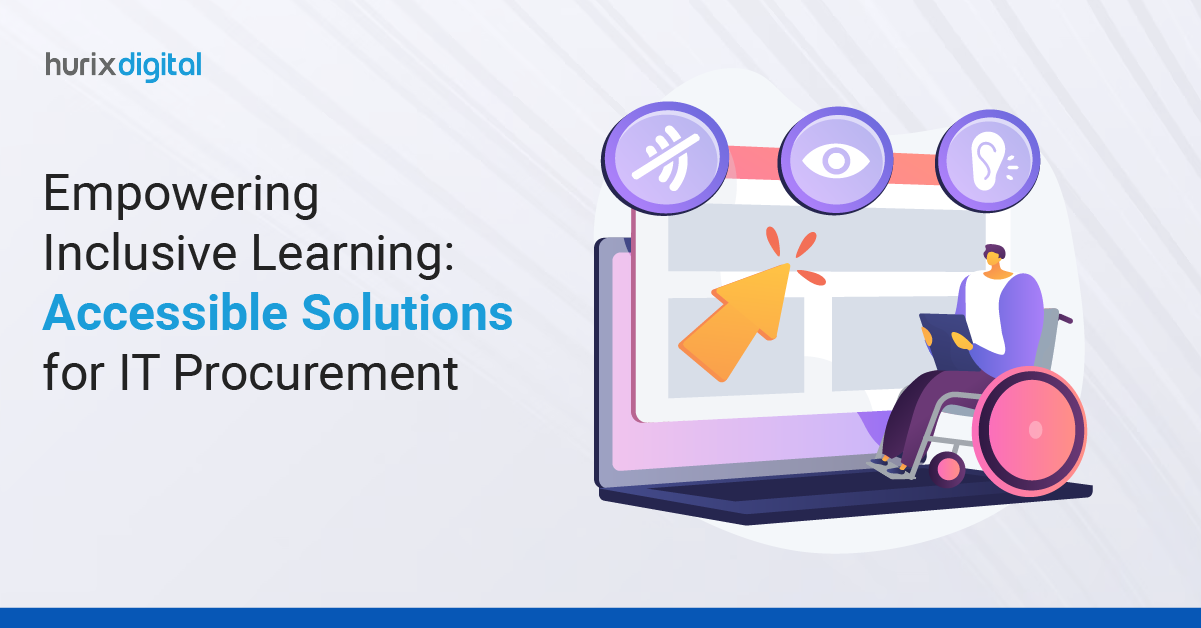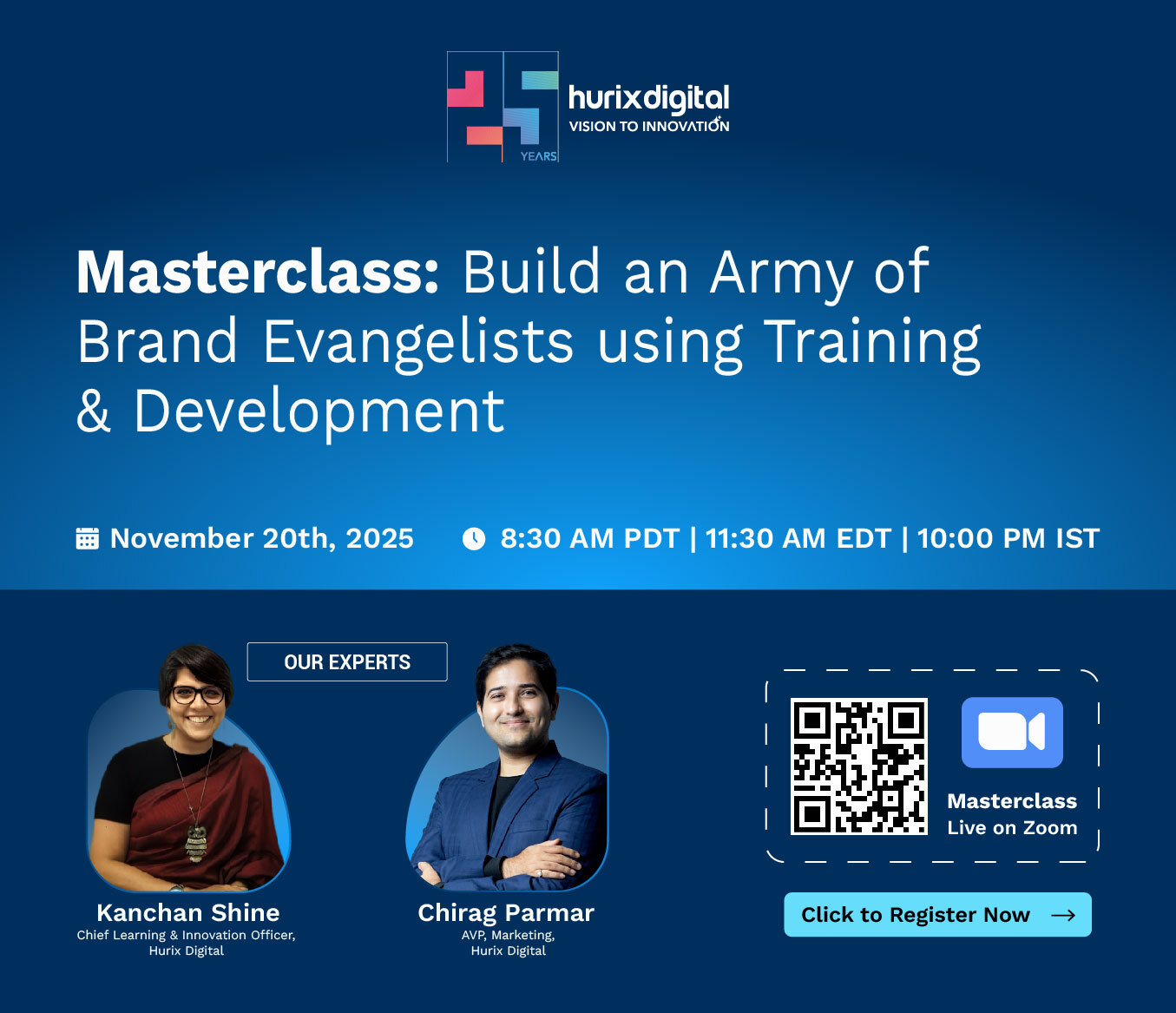
Empowering Inclusive Learning: Accessible Solutions for IT Procurement
Summarize with:
Today’s higher education institutions are very concerned about providing students with technological empowerment. Because IT procurement directly affects the development of inclusive learning environments, effective management is essential.
Nevertheless, controlling this procedure can be difficult. Since more and more students have a variety of demands, school administrators need to create plans that prioritize accessibility fixes.
Recent statistics show that over 19% of undergraduate students report having a disability. Thus, institutions that pay attention to accessibility during IT procurement will achieve improved learning results and meet legal obligations.
This blog discusses how accessibility-focused services can reimagine the IT acquisition process and increase its efficacy for colleges and universities.
Table of Contents:
- Understanding Accessible Solutions in IT Procurement
- Challenges in the Traditional IT Procurement Process
- How Accessibility-Focused Services Simplify Procurement
- Best Ways to Incorporate Accessibility into IT Procurement
- Conclusion
Understanding Accessible Solutions in IT Procurement
Accessible solutions in IT procurement mean a commodity or service suitable for persons with disabilities. These solutions guarantee equal education opportunities for learners with physical and cognitive impairments affecting education.
In the context of higher education, accessible solutions may include:
- Screen readers and text-to-speech software.
- Captioning and transcription services for video content
- Adaptive hardware devices
- Learning management systems with built-in accessibility features
Ensuring accessible solutions are in place does not end in procurement; it is more than compliance—it will aid in students’ success and enhance the institute’s image.
Challenges in the Traditional IT Procurement Process
The traditional procurement process, which incorporates accessibility features, presents many challenges. These can impede the efficient adoption of accessible solutions and create barriers for students with disabilities.
Some common impediments include:
- Lack of Awareness: Many procurement teams are unaware of the accessibility requirements or their importance.
- Complex Vendor Evaluation: Assessing vendors for accessibility compliance can be time-consuming and require specialized knowledge.
- Budget Constraints: There’s often a misconception that accessible solutions are significantly more expensive.
- Rapid Technological Changes: Due to the rapid evolution of technology, it might be challenging to stay current with the most recent accessibility requirements.
54% of procurement experts identify cost savings as their primary area of concentration, possibly surpassing accessibility considerations.
Also Read: 5 Key Ways in Which AI-Powered Accessibility Tools Benefit Teams
How Accessibility-Focused Services Simplify Procurement
Accessibility-focused services can guarantee the acquisition of inclusive and effective technology while streamlining IT procurement procedures. These specialist services provide knowledge and tools to assist organizations in more effectively navigating the challenges of accessible IT procurement.
Key benefits of utilizing accessibility-focused services include:
- Expertise and Guidance: These services contribute expert information on accessibility standards and policies, enabling institutions to make sound decisions.
- Vendor Vetting: It can help identify potential vendors’ commitments to accessibility and act as a time-saving tool for procurement specialists.
- Customized Procurement Strategies: These services can create procurement strategies based on an institution’s accessibility needs and funding framework.
- Ongoing Support: Many accessibility-focused services continue support after procurement to guarantee that technologies remain usable as they develop.
Through these services, institutions can streamline IT procurement processes and maintain focus on access.
Best Ways to Incorporate Accessibility into IT Procurement
Institutions should implement the following best practices to incorporate accessibility issues into the IT procurement process successfully:
1. Develop an Accessibility Policy
Create a thorough policy that explains your organization’s commitment to accessibility when purchasing IT. This policy should cover important accessibility guidelines and regulations, ensuring everyone involved is aware of the organization’s commitment to inclusivity.
2. Provide Training
Invest in ongoing training for procurement teams, decision-makers, and relevant staff. This training should cover accessibility standards, best practices for evaluating accessible technology, and how to implement these practices effectively.
Regular updates and refresher courses can help inform everyone about the latest accessibility standards and innovations.
3. Involve Diverse Stakeholders
Make certain that the procurement process involves a wide range of stakeholders. This includes employees in disability services, IT experts, and students with disabilities.
Their opinions and ideas are very helpful in determining accessibility criteria and ensuring that solutions satisfy every user’s practical demands.
4. Utilize Accessibility Testing Tools
Implement tools that can evaluate the accessibility of IT solutions before purchase. These tools can assess several accessibility factors, such as the user experience overall for people with impairments, ease of navigation, and compatibility with screen readers.
Frequent use of these tools contributes to the guarantee that purchased technologies fulfill accessibility requirements.
5. Incorporate Accessibility Requirements in RFPs
Requests for Proposals (RFPs) should all explicitly express accessibility requirements. This ensures prospective suppliers are informed about your organization’s accessibility requirements.
By specifying these requirements, you can attract vendors committed to providing accessible solutions and avoid those that do not meet these standards.
6. Establish Vendor Partnerships
Establish enduring connections with suppliers who have a proven track record of offering easily accessible solutions. Forming these alliances can result in continuous accessibility enhancements and give you access to a dependable supplier base that is cognizant of your organization’s unique requirements.
Regular communication with these vendors can also help promptly address emerging accessibility issues.
7. Monitor and Evaluate
Regularly assess the effectiveness of the accessible solutions you have procured. Collect feedback from users, including students with disabilities, to evaluate their usability and effectiveness.
Implement a continuous evaluation and improvement process to ensure that your IT resources remain effective and accessible over time.
This approach allows institutions to foster a diverse learning environment while optimizing procurement methods. Studies show that well-developed procurement practices can lead to 8–12% cost savings compared to less developed approaches.
Also Read: The Impact of 508 Compliance on EdTech Content Accessibility: What Editorial Managers Need to Know
Conclusion
Embracing accessible solutions and accessibility-focused services in IT procurement is not just a legal obligation; it’s a strategic imperative for higher education institutions.
By streamlining IT procurement processes with a focus on accessibility, academic leaders can create more inclusive learning environments, enhance student success, and potentially reduce costs.
As technology evolves, the need for efficient, accessibility-focused procurement will only grow. By following the best practices outlined in this blog, institutions can lead the way in inclusive education, ensuring all students have equal access to the resources and tools they need for success.
Ready to transform your IT procurement process with a focus on accessibility? Contact us today to learn how our expertise can help you create a more inclusive and efficient learning environment for all students.
Summarize with:

Vice President – Content Transformation at HurixDigital, based in Chennai. With nearly 20 years in digital content, he leads large-scale transformation and accessibility initiatives. A frequent presenter (e.g., London Book Fair 2025), Gokulnath drives AI-powered publishing solutions and inclusive content strategies for global clients
 Upcoming Masterclass | Build an Army of Brand Evangelists using Training & Development | November 20th, 8:30 AM PDT | 11:30 AM EDT | 10:00 PM IST
Upcoming Masterclass | Build an Army of Brand Evangelists using Training & Development | November 20th, 8:30 AM PDT | 11:30 AM EDT | 10:00 PM IST

